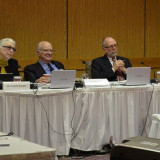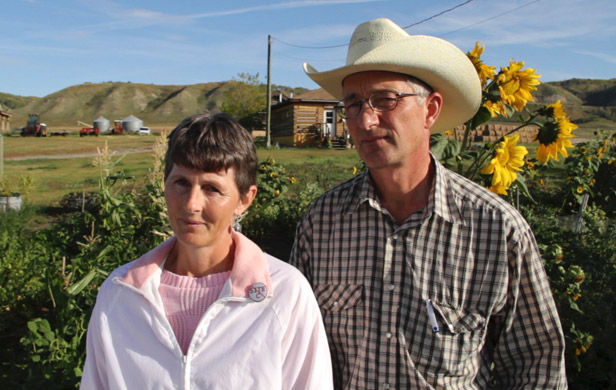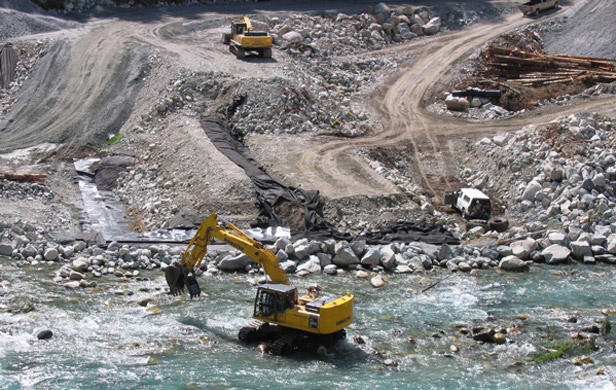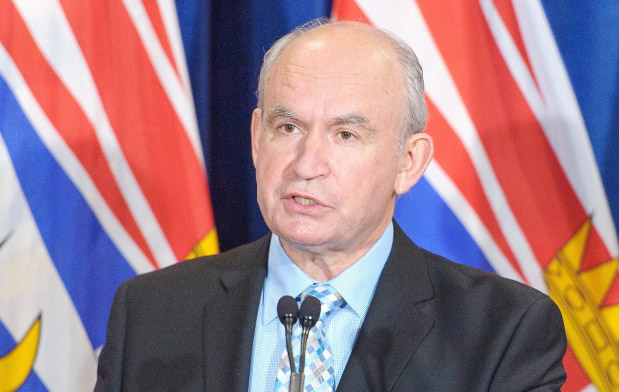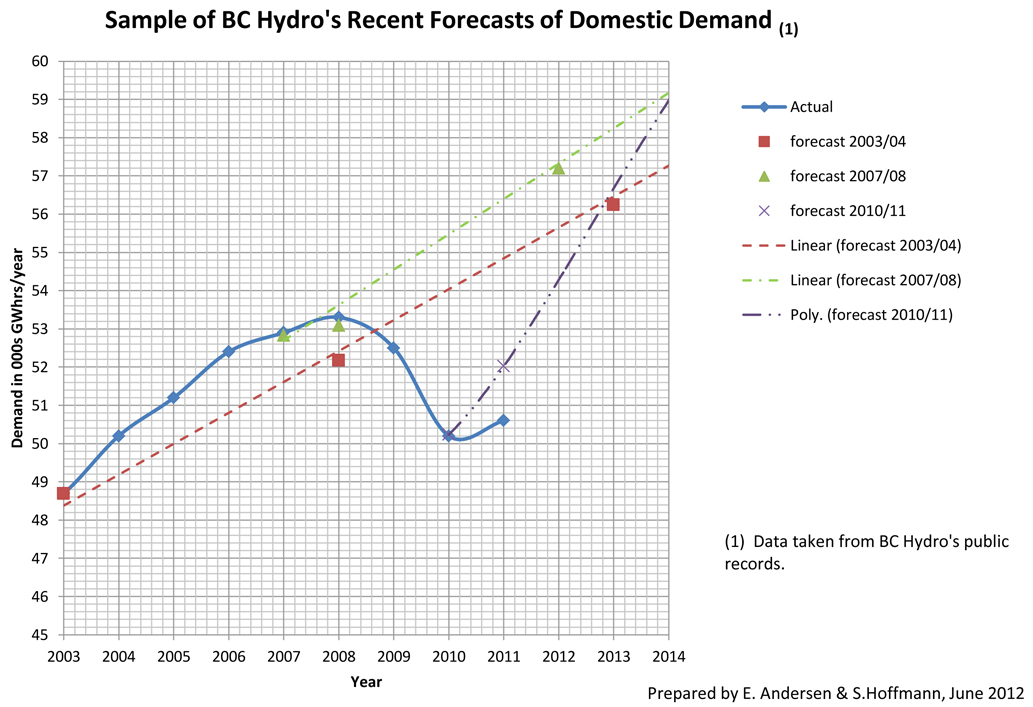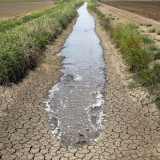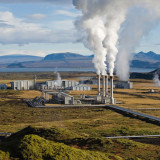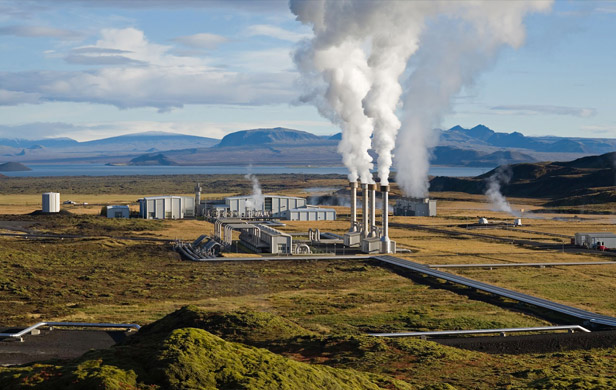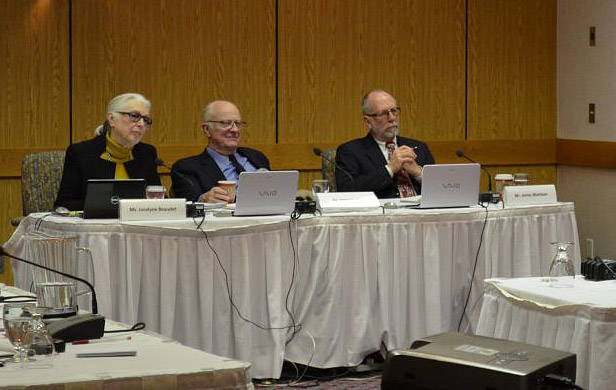
In a highly unorthodox move for a person in his position, the chair of the Joint Review Panel for Site C Dam has come out with harsh words for the $9 Billion project and the BC government’s hurry to get it built.
Harry Swain, a former federal deputy minister with deep experience in the environmental assessment business, made the comments in an eye-opening interview with Desmog Canada’s Emma Gilchrist, almost a year after the panel he led issued its report. Speaking for himself, Swain said:
[quote]There’s a whole bunch of unanswered questions, some of which would be markedly advanced by waiting three or four years. And you’d still be within the period of time, even by Hydro’s bullish forecasts, when you’re going to need the juice.[/quote]
The province and BC Hydro, by contrast, want shovels in the ground on the project – which would flood or disrupt 30,000 acres of prime farmland – as early as this summer.
Cost and need questioned
Recent changes to environmental assessment laws in Canada mean review panels no longer make decisions on projects, instead issuing recommendations to Cabinet, which has the ultimate say. Swain agrees with this approach, noting to Gilchrist, “I’m still strongly of the view that review panels are advisors and governments get paid to make the decisions and live with the consequences at the next election.”
To that end, Swain’s panel gave the provincial and federal governments plenty of food for thought in a 471-page report that raised tough questions about the economic case and need for the project.
And with good reason. In just the few months between the province issuing Site C’s environmental certificate to confirming the project will proceed, the cost ballooned by nearly another billion dollars. This from a government with a long track record of doubling the cost of major capital projects on its watch.
As our resident economist Erik Andersen has demonstrated time and time again in these pages, the power from Site C is simply not needed – not now, nor far into the future. BC’s electrical demand has flatlined, thanks to increased conservation and a decline in industrial demand, and Hydro has consistently, vastly overestimated future demand.
Swain echoed this point in his recent interview. “Frankly, I think their low-demand figure was probably overstated,” he noted. “So far there is no evidence that even their low usage scenario is likely to take place.”
To this point, the stated need for Site C has changed several times, including powering LNG and a new justification that emerged before the panel – that BC could sell this excess power to California.
A $350 million/year loss
The only trouble with this plan is that it’s a losing proposition for BC ratepayers and taxpayers. With power trading consistently for $30/megawatt hour on the spot market and Site C’s anticipated cost at over $100/MWh, it’s not hard to see how the project could end up costing the public far more than the crippling $9 Billion sticker price and financing.
In fact, the panel projected an $800 million operating loss for the project in its first four years. Dan Potts, retired head of the Association of Major Power Users of BC, pegs this figure even higher, at $350 million a year loss going forward.
Then there’s the matter of the risk the project’s escalating cost poses to the province’s credit rating – enough of a concern that it prompted Finance Minister Mike de Jong to take a last-minute trip to Toronto, before announcing Site C would proceed, to meet with ratings agencies and plead the province’s case. So far, we’ve held onto our Triple-A rating. But how long will that last with massive new debts like these and the likelihood of major cost overruns?
Energy watchdog stripped of oversight
Swain is also highly critical of the government’s process in reviewing the project, especially stripping the public’s energy watchdog, the BC Utilities Commission, of its oversight. Says Swain:
[quote]Knowing that the province had decided to exempt the project from the scrutiny of the utilities commission, we nonetheless felt that that was not good public policy and recommended otherwise. They of course gave us the back of their hand.[/quote]
The BCUC specializes in reviewing proposed projects and energy plans based on their need and value to the public. Swain’s panel was not as well equipped to review these issues, as he now acknowledges. “That requires much, much more time and expertise,” he noted to Gilchrist. “Moreover it is a job that the utilities commission is specifically set up to be able to do.”
Alternatives ignored
Swain calls the government and Hydro’s failure to investigate alternatives to Site C “a dereliction of duty.” While reports from the geothermal industry suggest this untapped energy source could provide for all of the province’s future needs, it has received little to no attention from a government hellbent on this antiquated dam.
“The province or the province and its wholly owned subsidiary BC Hydro should have taken to heart the admonitions of the utilities commission 32 years ago and done some of the basic work that would allow an industry to develop,” Swain told DeSmog Canada. “But they didn’t do it, so there we are.”
First Nations not going away
The panel’s terms of reference restricted it to merely cataloguing First Nations concerns about the project. “We were not to pass an opinion on them,” noted Swain. “We were not to say whether consultation had been adequate and so on and forth. If you are forbidden to talk about that, you can not come to a conclusion about the overall project.”
But the review panel and the governments which issued the project’s environmental certificates only delayed and intensified the threat from First Nations to derail the project. Site C now faces multiple provincial and federal lawsuits, already in progress, from First Nations and farmers. These legal challenges are based, essentially, on the BC Liberal government’s choice to ignore many of the panel’s most critical findings, relating to cost and need.
Recent attempts by BC Hydro to speed up hearings in order to facilitate a summer construction start failed to persuade a federal judge. Then, just last week, the Blueberry River First Nations upped the ante with an ambitious civil claim against the province over longstanding treaty violations. Central among their concerns is Site C, for which they acknowledged they may seek an injunction as part of this lawsuit.
This just doesn’t happen
The most striking fact of Mr. Swain’s recent interview is that it happened at all. I’ve been documenting environmental assessments at the provincial and federal level for close to a decade now and you simply don’t see this. Panel chairs don’t comment publicly on political decisions that relate to their recommendations after they’ve rendered them.
The fact that Mr. Swain felt compelled to unburden himself of his frustration with the government’s haste in building Site C should – on top of all the other noteworthy critiques from agrologists, economists, lawyers, citizens and First Nations – give us all pause. It should convince this government to take a deep breath and reevaluate the most costly capital project in the province’s history.
But then, a government that demands this kind of public chastising is probably the least likely to listen to it.
